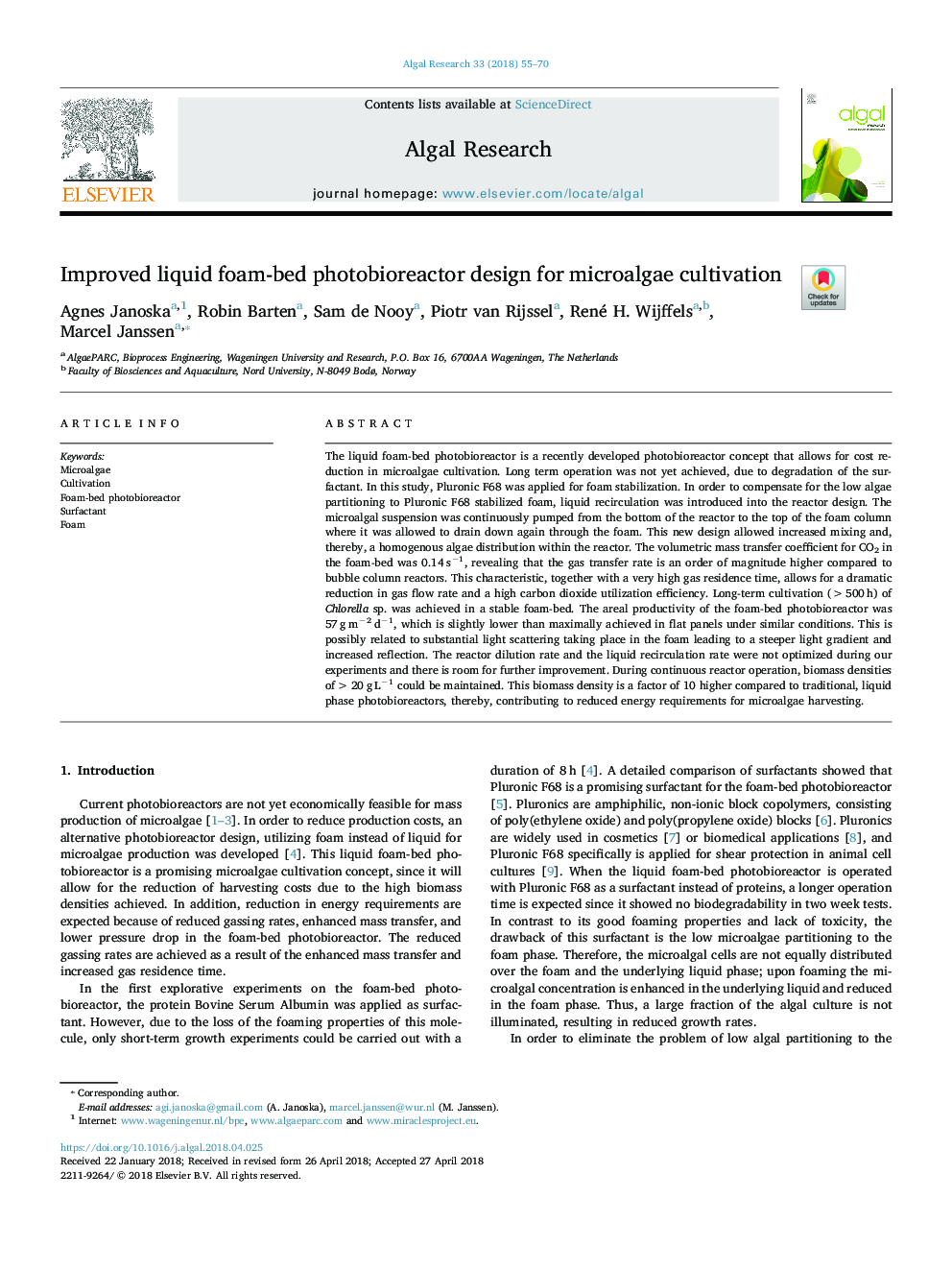| Article ID | Journal | Published Year | Pages | File Type |
|---|---|---|---|---|
| 8085687 | Algal Research | 2018 | 16 Pages |
Abstract
The liquid foam-bed photobioreactor is a recently developed photobioreactor concept that allows for cost reduction in microalgae cultivation. Long term operation was not yet achieved, due to degradation of the surfactant. In this study, Pluronic F68 was applied for foam stabilization. In order to compensate for the low algae partitioning to Pluronic F68 stabilized foam, liquid recirculation was introduced into the reactor design. The microalgal suspension was continuously pumped from the bottom of the reactor to the top of the foam column where it was allowed to drain down again through the foam. This new design allowed increased mixing and, thereby, a homogenous algae distribution within the reactor. The volumetric mass transfer coefficient for CO2 in the foam-bed was 0.14â¯sâ1, revealing that the gas transfer rate is an order of magnitude higher compared to bubble column reactors. This characteristic, together with a very high gas residence time, allows for a dramatic reduction in gas flow rate and a high carbon dioxide utilization efficiency. Long-term cultivation (>500â¯h) of Chlorella sp. was achieved in a stable foam-bed. The areal productivity of the foam-bed photobioreactor was 57â¯gâ¯mâ2â¯dâ1, which is slightly lower than maximally achieved in flat panels under similar conditions. This is possibly related to substantial light scattering taking place in the foam leading to a steeper light gradient and increased reflection. The reactor dilution rate and the liquid recirculation rate were not optimized during our experiments and there is room for further improvement. During continuous reactor operation, biomass densities of >20â¯gâ¯Lâ1 could be maintained. This biomass density is a factor of 10 higher compared to traditional, liquid phase photobioreactors, thereby, contributing to reduced energy requirements for microalgae harvesting.
Keywords
Related Topics
Physical Sciences and Engineering
Energy
Renewable Energy, Sustainability and the Environment
Authors
Agnes Janoska, Robin Barten, Sam de Nooy, Piotr van Rijssel, René H. Wijffels, Marcel Janssen,
